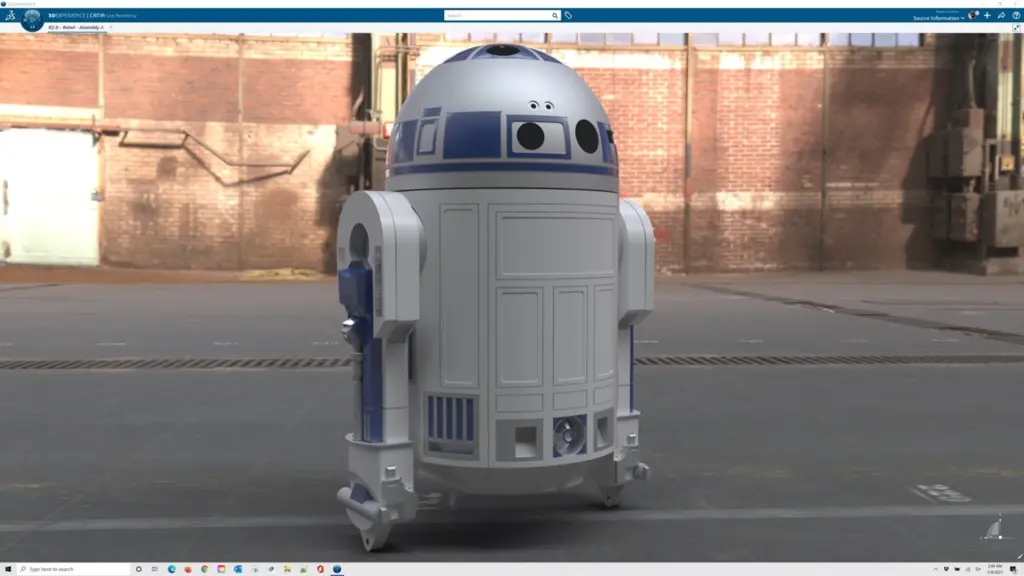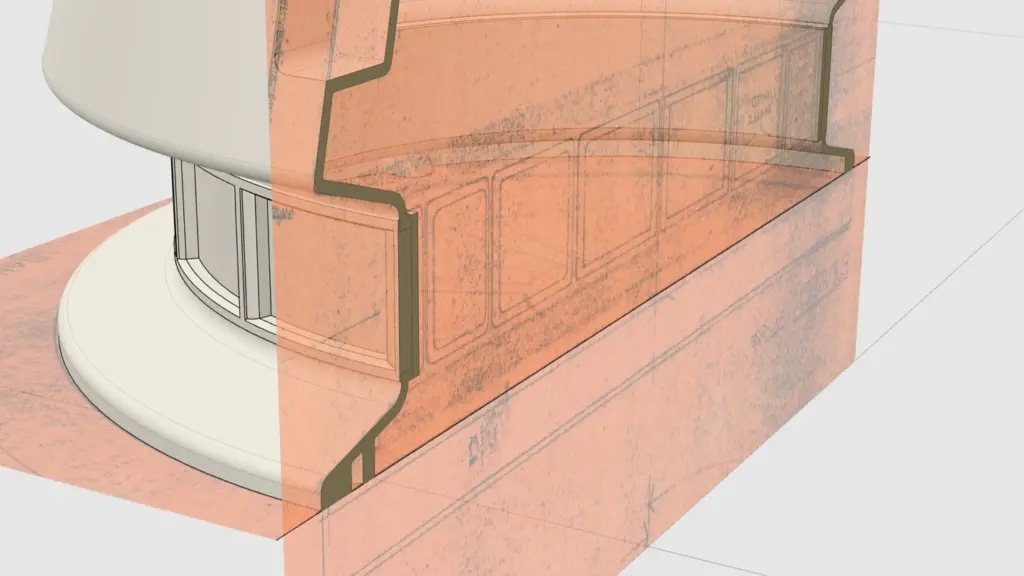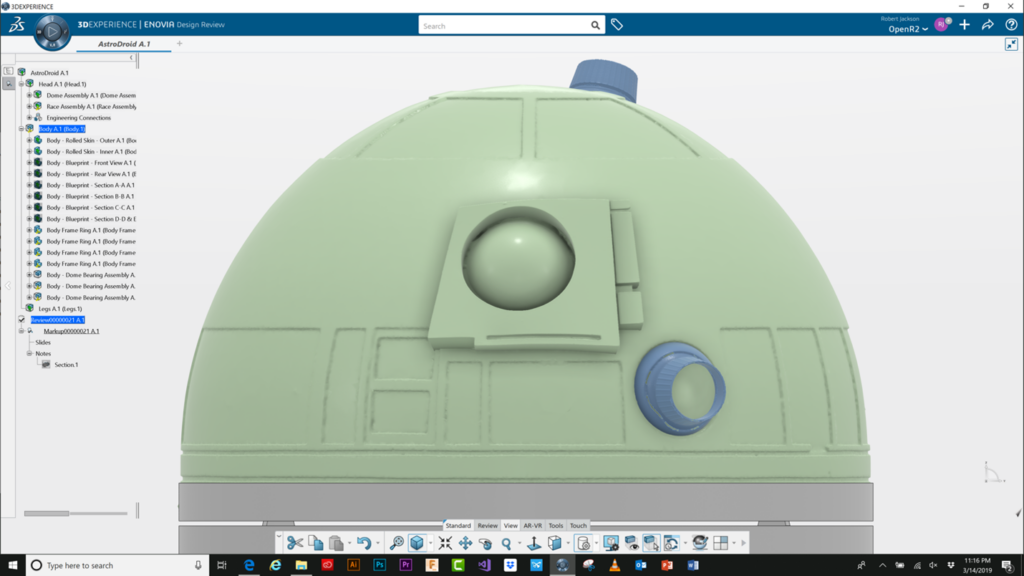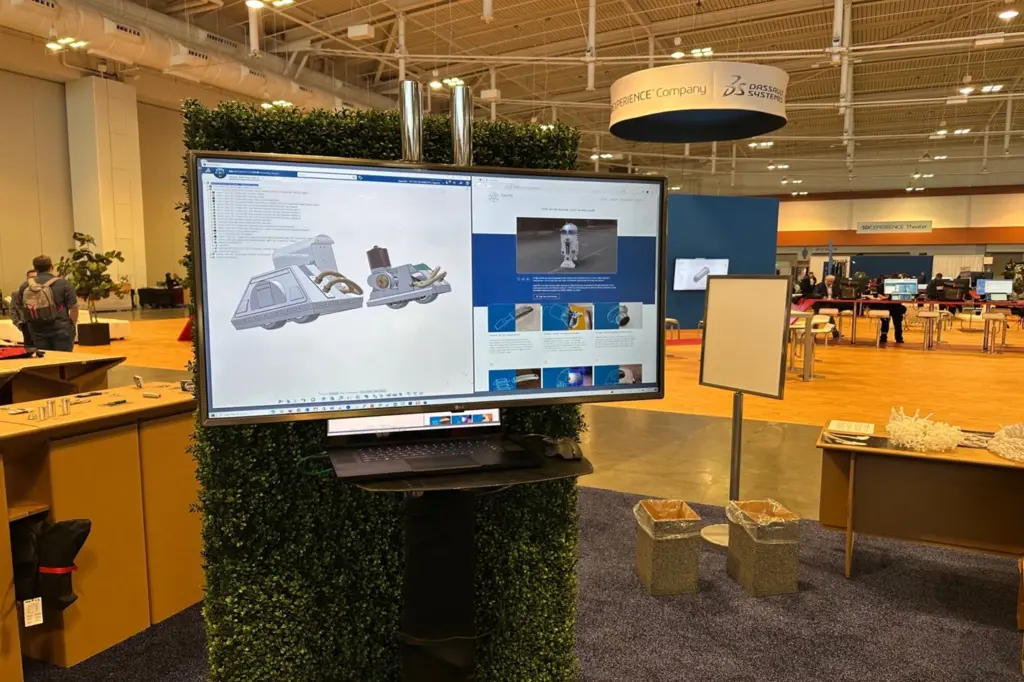Robert Jackson has spent approximately 25 years on a quest to bring the 1970s robot R2-D2 to life. Oh, he wants his robot to look good, for him, “good” means accurate, and he is using his engineering skills and modern tools to accomplish that. He was also one of the founders of OpenR2, whose mission is to collect as much legacy date concerning the droid as possible, making the information available through an open-source endeavor.
Robert Jackson had an idea many years ago and created a digital model of R2-D2 based on the character from the opening scene in Star Wars: Episode IV–A New Hope (there were several versions used throughout the film). He strived to get it as accurate as possible. He has been chasing that goal ever since. More than 25 years later, he now knows his model is 100% accurate; he has verified the dimensions against loads of data including original blueprints. He is in the process of assembling his droid, and then will give it the brains it never had, by using machine learning and AI to make it autonomous.

So while some people paint, hike, or bike, as a hobby, Jackson’s hobby is more unique, and possibly can be considered an obsession. For him, every detail, every measurement must be exact.
Jackson’s R2-D2 journey began more than two and a half decades ago, when the engineer began working for Silicon Graphics, where he often made 3D graphics demos for automotive companies. His boss had a cardboard cutout of R2-D2 in his office—the version that appeared in the first scene of the first Star Wars movie, Episode IV–A New Hope (1977). To impress his boss, Jackson decided to model R2-D2 in CATIA (version 4), using the cutout, a photo, and the movie (on VHS) for reference.
“I didn’t know any of the dimensions. I just knew that the person standing next to him, Mark Hamill (as Luke Skywalker), was about so tall,” Jackson explains.
Mission accomplished on both fronts.

In 1999, as the Internet was taking off, Jackson joined the E2 Builders Club, a community for those constructing their own replica robots from the Star Wars universe. In 2013, Jackson and others broke off and formed the online community OpenR2, an open-source effort whose goals are to research the specifications of the robot prop built at Thorn-EMI Elstree Studios in 1976 and to implement an open-source robotics backbone for those specs using the Robot Operating System (ROS). Over 4,000 members strong, the community has a small core team of contributors adept in mechanical engineering, research, and software. As a result of their efforts, Star Wars fans can download original pencil drawings, blueprints, and specifications to make their own replica droid.
As Jackson notes, there were actually seven different versions of R2-D2 in the film, all slightly different. He and his group are focused solely on the R2-D2 from that first scene in A New Hope, when the droid made its first appearance. “We’re going after the magic of that one you see in the first scene,” says Jackson. “I really like industrial design, and I’m a very big fan of George Lucas’ industrial design and the whole universe he put together. Everything had to be made out of real metal. There’s a lot of mechanical engineering going on in that first film.”
Turning yesterday into today
As for Jackson’s replica, “On the exterior, we want it to look exactly like it did in 1976, using the same materials, the same construction methods. On the inside, though, it will be updated to 2023,” he says, adding that the actual movie design incorporated actors inside the robot shells or were remotely controlled.
The original R2-D2 was designed by John Stears and built at Peteric Engineering, headed by Dr. David Watling, a former aerospace mechanical engineer. “The quality of the construction is just phenomenal,” he says. “The physicality of it holds up. And we wanted to replicate that to a tee.”

The documentation from all the information gathered over the years is part of a community project and is available through open source via OpenR2. However, some commercial parts that were used in the original build are no longer available. His commercial arm r2Maker has taken on the task, making replicas of these various parts by having them 3D printed by Shapeways. On-site, there are three Formlabs resin printers, which are used strictly for validating the prototypes. When making the actual parts, which are made from stamped aluminum, they are machined.
Builders can opt to machine the parts or 3D print them themselves, since the plans for those, like everything used in the R2-D2 model, are available for download at no cost. Advice is also provided for free. Jackson says they are careful not to violate copyrights.
Jackson maintains all the plans and information using 3DExperience in CATIA (version 6). Dassault’s Enovia, powered by the 3DExperience platform, is used for product data management, PLM, change management, and so forth.
For years, Jackson has been collecting original R2-D2 blueprints—some are original pencil drawings from the draftsmen, and others are traditional blueprints. He has 10 in all.
Jackson then scanned those blueprints into CATIA and modeled them in 3D. Almost all of them are fully dimensioned, but there are some that have a really complex shape that had to be traced over. “These people were mechanical engineers, and they made those robots right to those blueprint specs,” he says.

Mission not quite complete, yet
Four years ago, Jackson set up a five-year goal to complete his R2-D2 builds—he has two in progress. That means he has until the end of the year to have everything done, painted, welded, and assembled. The final year will be all about the robotics.
Jackson also has some actual R2-D2 parts from the droid in the film, which further validates the blueprint specs. Satisfied with the accuracy, Jackson is ready for the build process. “I’m perfectly comfortable with CAD and modeling in 3D. I’m also adept at writing software. What I’m not comfortable with is welding, and aluminum is the hardest to work with,” he says.

This being the 1970s, the electronics were very, very primitive compared to the exterior. Jackson will use Nvidia Jetson, a low-powered system for accelerating machine learning applications, to make it fully autonomous. “When you put this Jetson inside R2-D2, it becomes a real robot,” he says.
This, of course, involves machine learning and computer vision, with the goal of having the R2-D2 robot able to maneuver safely around a trade show floor at conventions. Jackson will be training the machine learning to recognize stormtroopers so it will release that robotic noise in recognition and follow the stormtroopers. Through machine learning, the bot will be able to map out its environment for locomotion.
The robot’s operating system, called ROS, is open source developed at Stanford University. Recently, NASA announced that they are going to make Space ROS for missions to space, which adds a cool spin to his project. Jackson hopes that by the time he gets started in December on the robotics portion of his model, NASA will have its first Space ROS distribution available that he can use for his R2-D2.
Other technologies for this phase of the work include computer vision and Lidar.
Once the robot is completed, Jackson will take it to various conventions—those geared to Star Wars and those focused on CAD and engineering. He has a partnership with Dassault—they are providing the CATIA and 3DEperience software, cloud storage, and more to aid the community project—and in exchange, OpenR2 will participate at their trade shows with the droid.
“The open project lets anyone build an R2-D2 at home,” Jackson says. “We’re showing them how it was done in the film. But we’re totally open to people downloading the files and 3D printing it, making it out of styrene plastic, fiberglass, aluminum, wood….”
So, how much will it cost someone to build a replica aluminum R2-D2? About $15,000 to $20,000.

For in-depth information on the CAD industry, check out JPR’s CAD report.





